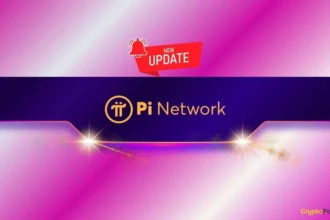The European Union (EU) has announced an initial humanitarian assistance package of €510 million to Nigeria and other Sub-Saharan African countries in 2025. This funding is part of a broader €1.9 billion humanitarian aid initiative designed to support vulnerable populations across various global regions, according to a report by the nation newspaper. The announcement, made by the EU delegation in Abuja, underscores the EU’s commitment to alleviating humanitarian crises, particularly in Africa, where conflicts, food insecurity, and climate-related challenges have significantly impacted millions of lives.
In this article, we will examine the details of the EU’s humanitarian assistance, its implications for Nigeria and other African nations, and the key issues influencing the EU’s decision to allocate such substantial aid. We will also explore the broader context of humanitarian funding, including the roles of international organizations, key stakeholders, and the major crises affecting Africa today.
Understanding the European Union’s Humanitarian Assistance Strategy
Overview of the EU’s €1.9 Billion Aid Package
The European Commission, which manages the EU’s humanitarian efforts, has announced an initial allocation of €1.9 billion in 2025 to support people affected by conflicts, food shortages, climate disasters, and other crises worldwide. Out of this, €510 million has been specifically designated for Africa, with a focus on the following regions:
- West and Central Africa
- The Sahel
- The Lake Chad Basin
- North-West Nigeria
- Central Africa
- The Great Lakes Region
- The Greater Horn of Africa
These areas have been selected due to ongoing conflicts, food insecurity, displacement, and climate-induced disasters.
Why Africa? Understanding the Crisis
Africa remains a focal point for humanitarian intervention due to several pressing challenges:
- Conflict and Insecurity: Armed conflicts in the Sahel, Nigeria’s North-West, and the Central African Republic have displaced millions.
- Food Insecurity: The FAO and WFP have consistently warned of food crises in Africa due to poor harvests, inflation, and climate change.
- Climate Change: Droughts, floods, and desertification have worsened humanitarian conditions, particularly in the Sahel and the Horn of Africa.
- Health Emergencies: Epidemics such as cholera, Ebola, and measles continue to challenge fragile health systems.
The EU’s allocation is aimed at addressing these multiple crises and ensuring that vulnerable populations receive food aid, healthcare, and protection.
Breakdown of the €510 Million for Africa
1. West and Central Africa
West and Central Africa remain highly unstable due to insurgencies, coups, and economic crises. The EU’s funding in this region will be directed towards:
- Humanitarian response in conflict zones (e.g., Mali, Burkina Faso, Chad, and Niger)
- Food and nutrition programs for regions affected by drought and rising food prices
- Healthcare support, including vaccination campaigns and emergency medical assistance
2. The Sahel
The Sahel region (which includes Mali, Burkina Faso, Chad, and Niger) has been at the epicenter of humanitarian crises due to jihadist insurgencies and political instability. The EU’s assistance will provide:
- Emergency food assistance for millions at risk of famine
- Protection for displaced populations fleeing violence
- Support for education in crisis-affected areas
3. The Lake Chad Basin
This region, covering parts of Nigeria, Chad, Cameroon, and Niger, has been affected by the Boko Haram insurgency and climate-related challenges. The EU’s intervention in this area will focus on:
- Assistance for internally displaced persons (IDPs) and refugees
- Water, sanitation, and hygiene (WASH) programs
- Climate adaptation projects to address the shrinking Lake Chad
4. North-West Nigeria
Nigeria’s North-West region has experienced increasing violence due to banditry, kidnappings, and communal conflicts. The humanitarian situation has deteriorated, with thousands displaced. The EU’s funding will be used for:
- Emergency food relief for conflict-affected communities
- Shelter and healthcare services for displaced persons
- Programs to protect women and children from gender-based violence
5. Central Africa
The Central African Republic (CAR) and the Democratic Republic of Congo (DRC) have long been plagued by civil conflicts and humanitarian emergencies. The EU’s aid in this region will include:
- Support for peacekeeping efforts and humanitarian assistance
- Food distribution to conflict-affected populations
- Emergency medical aid for war victims
6. The Great Lakes Region
Countries like Rwanda, Burundi, and Uganda have faced challenges related to refugee inflows and political instability. The EU’s assistance will prioritize:
- Refugee resettlement and humanitarian aid
- Food security programs for vulnerable populations
- Medical assistance for malnourished children
7. The Greater Horn of Africa
This region, encompassing Ethiopia, Somalia, Kenya, and South Sudan, has been severely affected by drought, famine, and conflict. The EU’s aid will help:
- Combat severe drought and hunger crises
- Provide emergency shelter for displaced populations
- Support conflict-resolution efforts in South Sudan and Ethiopia
The EU’s Role in Global Humanitarian Assistance
Why the EU is Investing in Africa
The EU has a long history of providing humanitarian aid to Africa. Key motivations include:
- Moral and Humanitarian Responsibility: The EU sees humanitarian aid as a fundamental aspect of its global commitment to human rights.
- Security Concerns: Stability in Africa directly impacts Europe, particularly in terms of migration and security threats.
- Strategic Partnerships: Many African nations have strong economic and diplomatic ties with the EU.
How the Aid is Distributed
The EU’s humanitarian assistance is channeled through:
- The European Civil Protection and Humanitarian Aid Operations (ECHO)
- Partnerships with the United Nations (UN), NGOs, and local governments
- Direct funding to aid organizations working on the ground
Challenges in Implementing Humanitarian Assistance
1. Security Risks
Many regions receiving EU aid are plagued by conflict and instability, making the delivery of assistance difficult.
2. Corruption and Mismanagement
Aid funds sometimes fail to reach their intended recipients due to corruption or inefficiencies in local governance.
3. Logistical Barriers
Poor infrastructure and transportation challenges hinder the timely delivery of food and medical supplies.
4. Dependency on Foreign Aid
Long-term reliance on foreign assistance can slow the development of local solutions.
Conclusion
The European Union’s allocation of €510 million to Nigeria and other Sub-Saharan African countries in 2025 highlights its commitment to addressing humanitarian crises in Africa. With conflicts, climate change, and food insecurity exacerbating challenges in the region, this aid is crucial in providing emergency relief and supporting long-term resilience.
However, ensuring the effective implementation of these funds remains a critical challenge. Stakeholders, including governments, NGOs, and international organizations, must work together to ensure that aid reaches those most in need. The EU’s continued engagement in Africa demonstrates not only its humanitarian commitment but also its strategic interest in fostering stability and development across the continent. If you’re mining BOTH Coins, then use this REWARD CODE: 551761
As 2025 unfolds, the success of this humanitarian intervention will depend on the ability of local and international partners to overcome challenges and deliver tangible results for Africa’s most vulnerable populations.












Mine Pi for free on your phone! I am sending you 1π! To claim your Pi, follow link https://minepi.com/yajer72 use (yajer72), your invitation code.